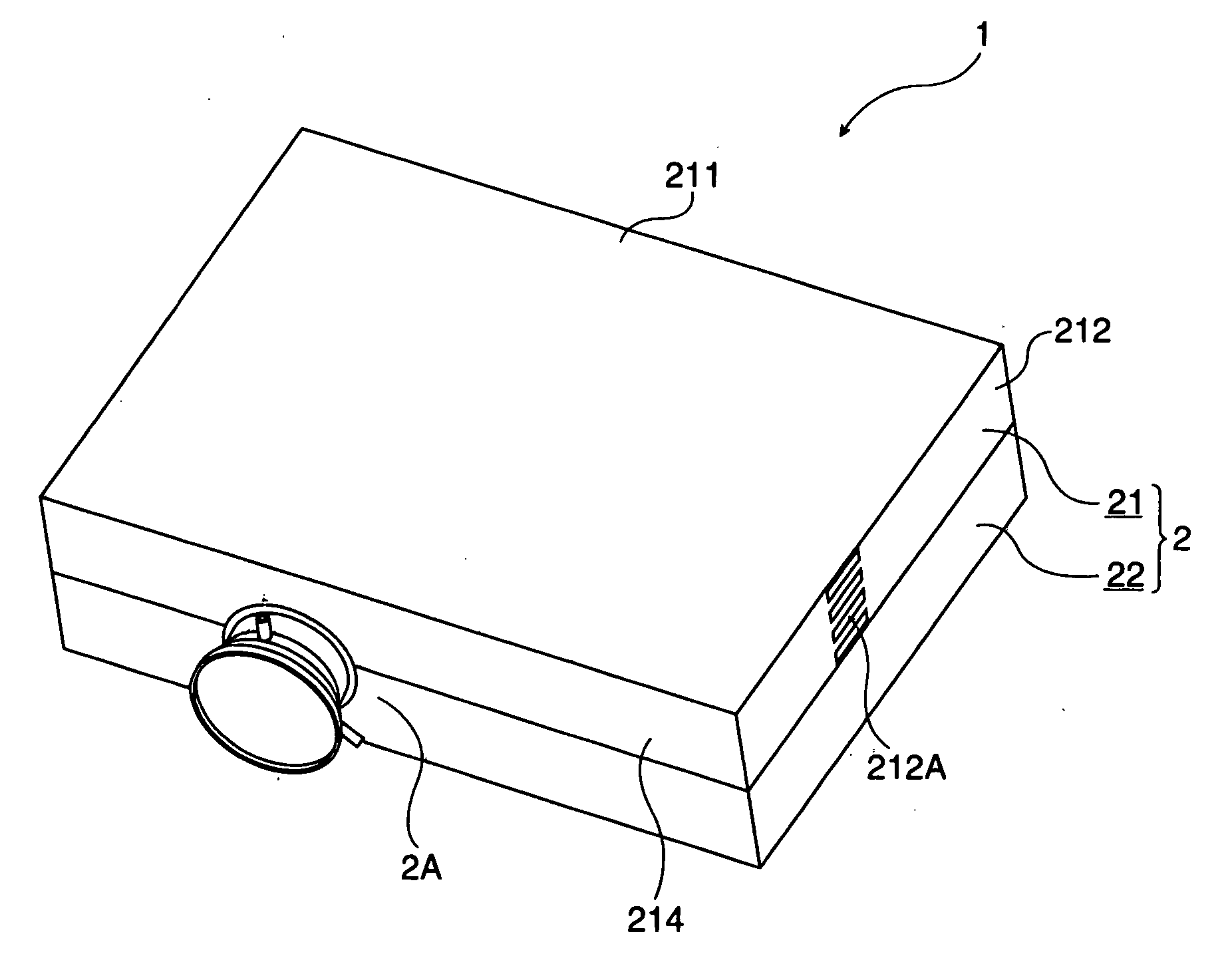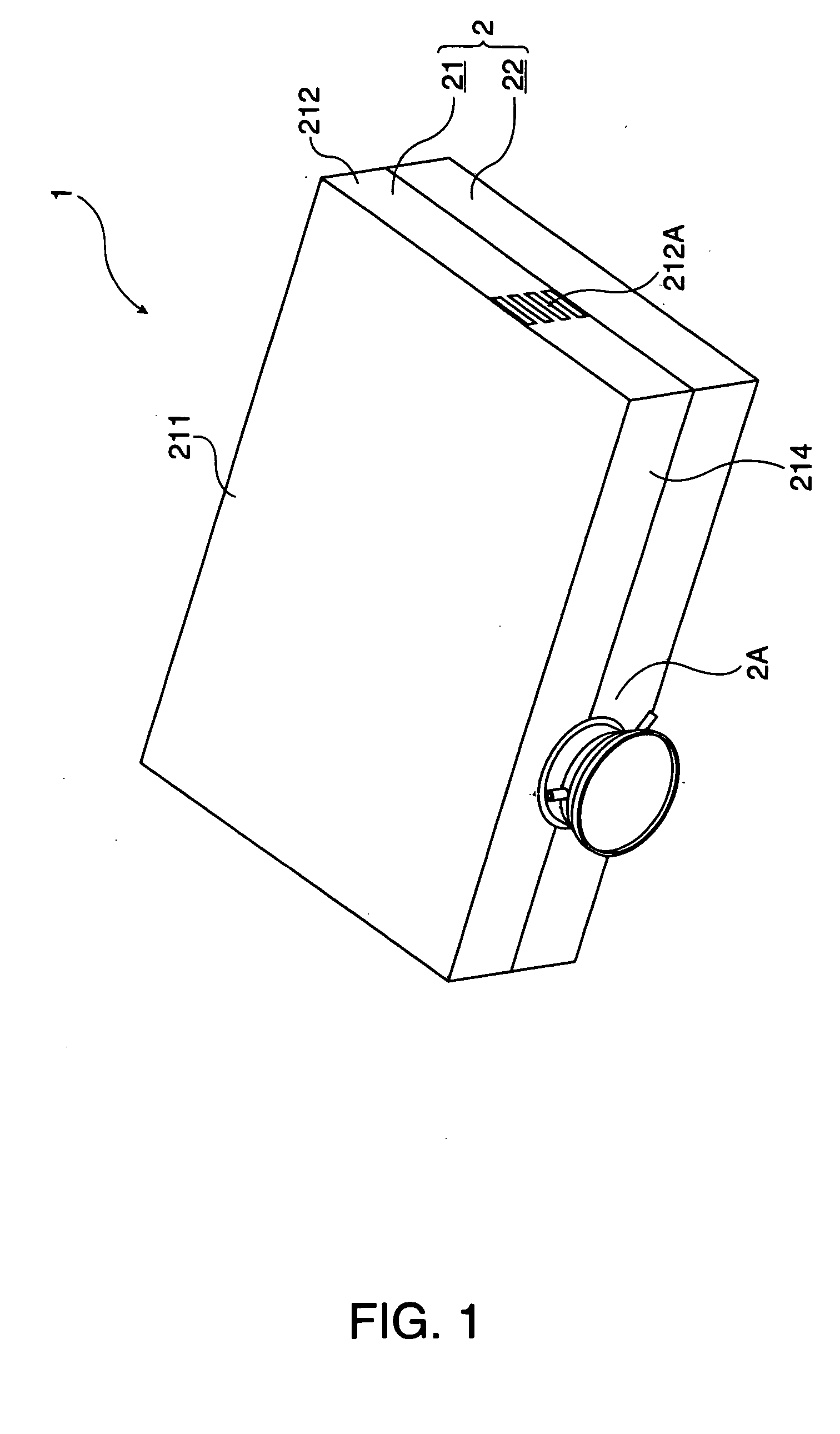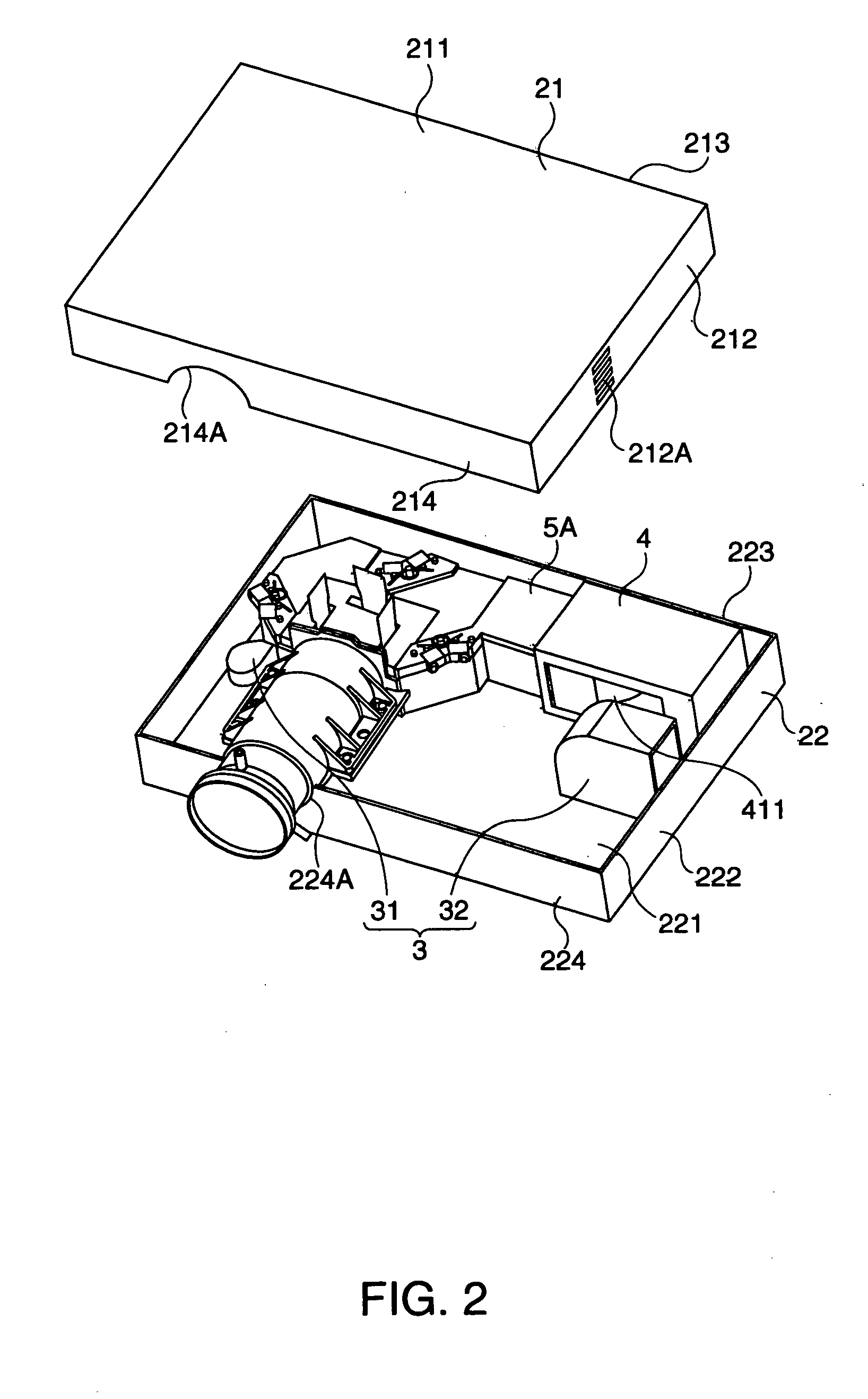Optical parts casing and projector
a technology of optical parts and projectors, applied in the field of optical parts casings and projectors, can solve the problems of low cooling efficiency, reduced quantity of air used to cool respective portions, and insufficient air cooling
- Summary
- Abstract
- Description
- Claims
- Application Information
AI Technical Summary
Benefits of technology
Problems solved by technology
Method used
Image
Examples
second embodiment
[0217] Next, the present invention will be explained with reference to FIG. 11 hereunder. In this case, in following explanations, the same reference symbols are affixed to the same portions as those already explained and their explanations will be omitted herein.
[0218] The present embodiment is different from the above embodiment in a rib structure of the duct provided to the bottom surface portion 512B of the optical parts casing. In other words, an optical parts casing 5B of the present embodiment has a duct 7 that is different from that in the above embodiment, but other respects are similar to the optical parts casing 5A in the above embodiment. The duct 7 in the present embodiment has a rib (outer peripheral wall) 71. This rib 71 has the first rib 611 almost similar to the above embodiment, and a second rib (second outer peripheral wall) 712 provided on the inside of the first rib (first outer peripheral wall) 611. In the present embodiment, the duct 7 and the intake fan 31 ac...
first embodiment
[0224] Meanwhile, the other part of the cooling air introduced into the opening port of the duct 7 is introduced into the second passage 7B. A part of this cooling air is at first introduced into the hole 515G formed at the position that corresponds to the liquid crystal panel 441G, and the remaining cooling air is introduced into the hole 515B formed at the position that corresponds to the liquid crystal panel 441B. That is, the cooling air flowing through the second passage 7B with the above, like the first embodiment, the cooling air introduced into the holes 515R, 515G, 515B cools the optical device 44.
[0225] According to the present embodiment, the same advantages as those recited in (1-1), (1-2), (1-4) to (1-6) of the first embodiment can be achieved, and in addition following advantages can be achieved.
[0226] (2-1) The second rib 712 does not surround the lower portion of the cross dichroic prism 444 of the optical device 44, and an area of the bottom surface portion 512B sur...
third embodiment
3. THIRD EMBODIMENT
[0228] Next, a third embodiment of the present invention will be explained with reference to FIG. 12 hereunder.
[0229] In the first embodiment and the second embodiment, a single intake fan 31 for sucking the cooling air is provided. In the present embodiment, two intake fans are provided.
[0230] One intake fan 31A of the intake fan 31 is arranged in front of the hole 515B corresponding to the liquid crystal panel 441B (on the projection lens 46 side (the left side in FIG. 12)), while the other intake fan 31B is arranged in front of the hole 515R corresponding to the liquid crystal panel 441R (on the projection side (the projection lens 46 side)).
[0231] An optical parts casing 5C in the present embodiment has a duct 8 whose shape is different from the above embodiments, but other respects are similar to those of the optical parts casing 5A in the above embodiments.
[0232] The duct 8 has two opening ports connected to the intake fans 31A, 31B respectively, and a rib (...
PUM
 Login to View More
Login to View More Abstract
Description
Claims
Application Information
 Login to View More
Login to View More - R&D
- Intellectual Property
- Life Sciences
- Materials
- Tech Scout
- Unparalleled Data Quality
- Higher Quality Content
- 60% Fewer Hallucinations
Browse by: Latest US Patents, China's latest patents, Technical Efficacy Thesaurus, Application Domain, Technology Topic, Popular Technical Reports.
© 2025 PatSnap. All rights reserved.Legal|Privacy policy|Modern Slavery Act Transparency Statement|Sitemap|About US| Contact US: help@patsnap.com



